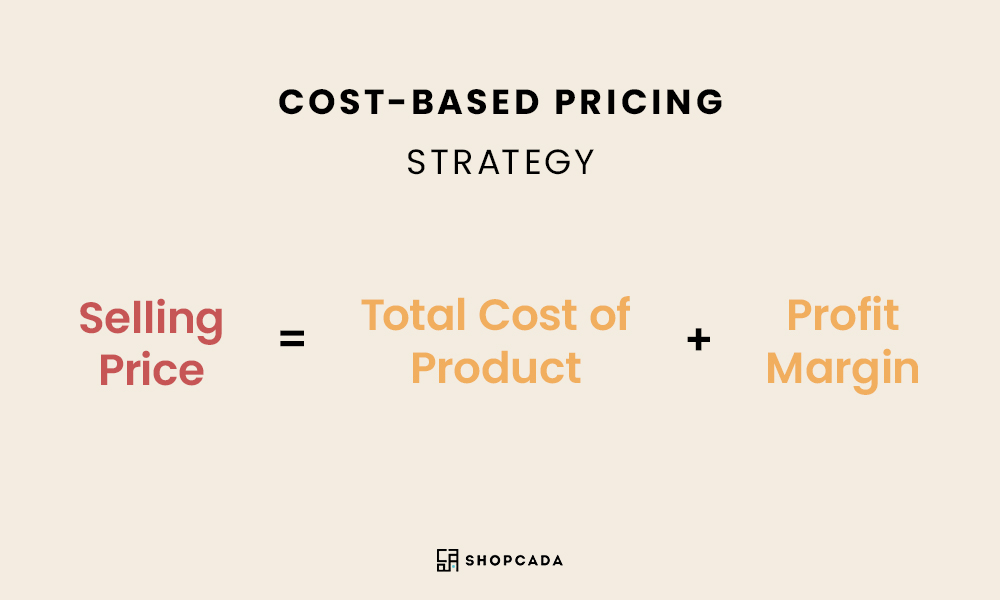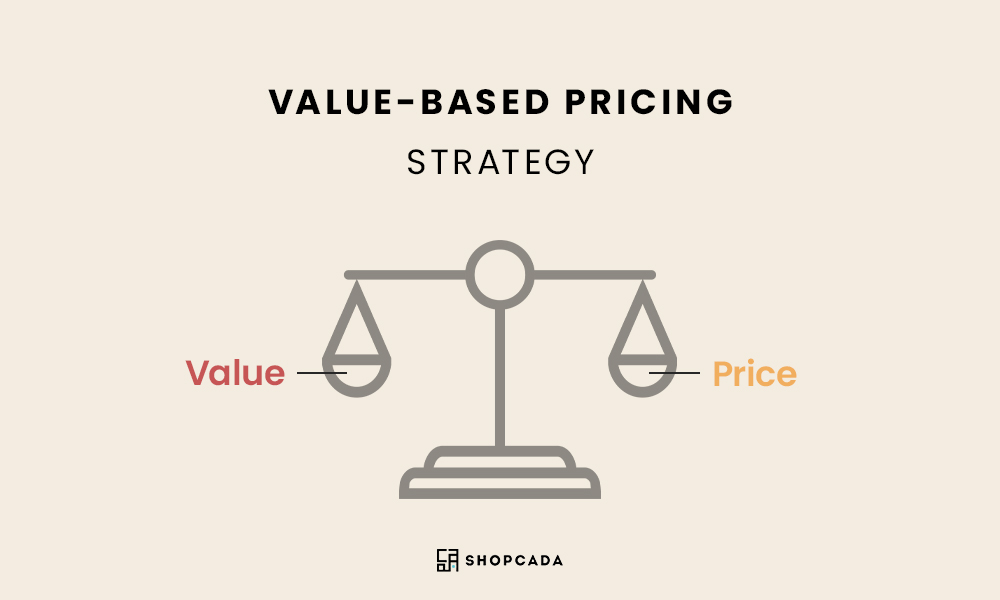100% Workable Pricing Strategies For Your Ecommerce Business

Developing a pricing strategy for your ecommerce business is critical, but it is far from simple.
Finding the "right" price for your products takes time. That is true regardless of your level of experience as an entrepreneur.
Coming up with a pricing strategy is especially difficult when it's your first time launching an online business.
It would help if you considered all costs associated with selling your products (including marketing campaigns) to set prices that your customers will appreciate while also allowing you to maximise your profit margins.
And, given that price is one of, if not the most critical factor in determining where shoppers will shop, you'll want to nail your pricing strategy.
That is why we have written this post. We'll look at the most common pricing strategies used by ecommerce businesses and determine which is best for your company.
By the end of this post, you'll have learned everything you need to know to develop a pricing strategy that you can put into action right away.
So, without further ado, let’s do further.

Definitions! What Is A Pricing Strategy?
Before we get too far into this, let's define what a pricing strategy is. A pricing strategy is essentially a set of rules or methods that businesses can use to price their goods and services.
Make no mistake about it: pricing strategies are marketing tactics, and nailing your pricing is one of the most effective ways to increase your conversion rate.
Operating an online business without a pricing strategy is akin to racing without a track. When running an online business, you must have a pricing strategy in place to ensure that you do not overprice your products or, worse, underprice them.

Strategies!!
• Cost-based Pricing
First, we have cost-based pricing strategy.
We're starting with this pricing strategy because it's unquestionably the simplest.
Cost-based pricing entails determining a price for your products by adding the cost of your products (including shipping costs) and the margin you want to make on each product.
Of course, you'll need to factor marketing costs into these prices as well, or you risk selling without making a profit.

How it works
There are two major issues to consider when developing a cost-based pricing strategy for your company.
The total cost of making a sale, as well as the profit margin that you want to make per sale.
So, let's look at an example to see how cost-based pricing works.
Assume you own an online women's clothing store that specialises in crop tops.
Since you're dropshipping, you won't have to worry about production costs because you buy your products directly from your supplier with each sale.
You pay $5 to get your products from your supplier and $2 to ship them to your customers.
That brings your total to $7.
Then you set a $5 per product cost for Facebook ads to bring traffic to your online store and convert them.
So you'll spend $12 to find a product, sell it, and ship it to customers.
Simple thus far, isn't it? To complete this cost-based pricing strategy, you'll need to decide how much you want to charge per product.
You could try selling the crop tops for $15 or $20 each and see if you can get sales - you'd make a good profit at either price.

Advantages?
To be honest, cost-based pricing is so simple that it's a good option for new entrepreneurs.
You can develop a pricing strategy without conducting extensive research on your customers or the market in which you operate.
If you can land sales with the marketing budget you've set aside for yourself in your pricing strategy, you'll be able to relax knowing that every sale you land is profitable.
Of course, you can reinvest that profit in your marketing campaigns to try to increase sales even further.

Disadvantages?
The primary issue with cost-based pricing strategies is that they are not customer-focused.
Instead, they are concerned with business.
When employing this pricing strategy, you consider how much money you want to make rather than how much money your customer wants to pay.
When running a business, it's always important to consider your customers, even if you don't have any right now.
This is because your customers are the engine that drives your company. You simply cannot progress without them.

• Competition-based Pricing
Another common pricing strategy for ecommerce businesses is competitor-based pricing.
It is a more complex pricing strategy than cost-based pricing, but it is still accessible to entrepreneurs of all levels of experience.
That's because, as the name implies, a competitor-based pricing strategy focuses on researching your niche's competitors.
How it works?
When developing a competition-based pricing strategy, you must analyse other brands that sell products similar to yours and take note of the prices they have set for their products.
Of course, that research will span both high-end boutiques and low-cost stores.
Why? When it comes to researching competitors, you want to get it right.
Before you can confidently create a competitor-based pricing strategy, you should get a strong sense of what's happening at all ranges of the niche you're selling in.
You'll then use that research to determine the prices for your products. And, if you do your homework properly, this pricing strategy can be extremely effective.
You could now go through your competitors' websites and check their prices one by one.
That's fine; you'll get a good understanding of the market you're in this way, even if it takes some time.
However, you could use a price tracking tool to collect data on your competitors' prices for you, eliminating the need for manual labour.
Once you've determined the average price for the products in your niche, compare it to the cost of making a sale, and the difference between those two figures is your wiggle room.
So, if the average price for a custom printed mug is $40, but it only costs you $20 to source and sell your product, you can price it anywhere between $20 and $50 which isn’t too shabby.

Advantages?
Pricing strategies based on competition are excellent for ensuring that your products are sold at or near market value.
It's a pricing strategy that takes time and effort to implement, but it allows businesses like yours to set prices that are fair to both you and your customers.
Disadvantages?
If you choose a competition-based pricing strategy for your company, you must be careful not to enter a "race to the bottom."
This occurs when new businesses enter a niche and attempt to position their brands as the cheapest.
When multiple brands do this at the same time, their profit margins are slashed as well, which means they'll have to sell more products to earn the same amount of profit as their competitors.
So, instead of slashing prices, one of the most frequently used dropshipping tips we give to beginners is to find new ways to attract customers, this is because offering everything at a low price can harm your company's image in the long run.

• Value-based Pricing
Okay, now let's talk about value-based pricing strategies.
This is possibly the best pricing strategy for companies looking for a long-term, scalable solution to product pricing.
That's because a value-based pricing strategy is based on determining the value that your products provide to your customers and pricing them accordingly.
How it works?
We'll need to combine elements of the cost-based pricing strategy and the competition-based pricing strategy to develop a value-based pricing strategy.
This is because we must determine how much "value" we bring, which is quite abstract.
So, to begin, we must determine our "baseline" - the lowest price at which we can sell our products.
To do so, we must record how much it costs to source the product, shipping rates, and your projected marketing costs to sell that product.
Add the two figures together to get our starting point price.
Following that, we'll need to employ competition-based pricing strategies and conduct market research.
Make a list of your main competitors and take notes on how they price their products.
Make a list of all the prices you find for comparable products to yours.
Then we'll look for the average price at which your competitors sell their products.
It is extremely simple to accomplish this. Simply add up all of the prices and divide the total by the number of prices you recorded.
So, if you checked ten competitors and wrote down 20 prices, you would add them all up and divide by twenty.
Phew. Don't be concerned; we're almost there.
Okay, now you have two figures: your baseline and your competition price.
If your baseline is $20 and your competition's price is $40, that means you can price your products anywhere between $25 and $40 and still make a profit.
However, where you place your prices on that scale is determined by the value you provide to your customers - essentially your USP.
It makes no difference whether it's your brand's mission, loyalty programmes, or even the high-quality materials in your products.
You're adding value to your company, so take action and figure out where your products fall between your baseline and the competition's price.
And once you've made that decision, you're ready to go: you'll have a working pricing strategy. Not too difficult, right?

Advantages?
A pricing strategy based on value is fair to both the brand and the customer.
This can help you improve customer loyalty, which is especially important given that it typically costs five times more to acquire new customers than it does to get repeat purchases from existing customers.
Building a successful brand necessitates trust, and one of the first steps in establishing trust with your buyers is to offer your products at a reasonable price.
Disadvantages?
The only real disadvantage of value-based pricing is that it can be difficult to quantify "value" at times.
Finally, the value you provide is only worth what people are willing to pay for it.

Closing Words
You now have everything you need to develop an ecommerce pricing strategy for your company and nail your pricing.
However, keep in mind that pricing is subject to change. Prices are constantly changing, and you'll need to stay on top of them as you run your business.
You most certainly will know your business best, so be fair with your pricing and make sure to collect learnings every time you change the price of your products.
Remember that when your customers are smart, you will, in turn, have to make smart decisions with your pricing strategies.
With that, we conclude our discussion of pricing strategies. Get out there and test them all out to see which ecommerce pricing strategy works best for your business today!

